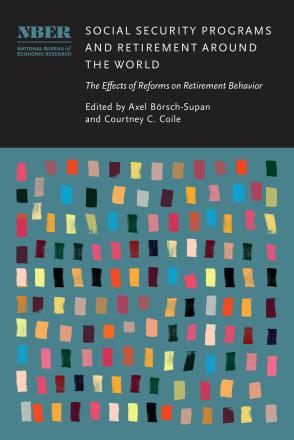Are Longer Working Lives a Response to Changing Financial Incentives? Exploiting Micro Panel Data from the UK

In the UK, as in many advanced economies, male and female employment rates at older ages have been rising consistently since the mid-1990s. To what extent do changes to pensions systems explain this trend? In this paper, we use the English Longitudinal Study of Ageing to construct individual-level measures of the financial incentives to remain in paid work that pensions systems provide. We use UK state pension rules, alongside the rich information on individual private pensions that is elicited in ELSA, to calculate the overall implicit tax or subsidy of earnings that each individual faces due to the change in their pension entitlements that results from an additional year of work. Linear probability and probit models find a positive association of wealth with labour market exit, and a mild but positive association with implicit taxes. Including individual fixed effects suggests that the association of labour market exit with wealth is not causal, but likely to be driven by unobserved heterogeneity, and that a 10ppt rise in the implicit tax rate causes a statistically significant 0.4ppt rise in the one-year-ahead exit rate (compared to a baseline rate of 8 percent amongst 55 to 74 year-olds). We find consistent evidence that crossing the State Pension Age threshold causes a 4-5ppts rise in the labour market exit rate, even when controlling for the changing financial incentives to retire that occur at that age.
-
-
Copy CitationJames Banks, Carl Emmerson, and David Sturrock, Social Security Programs and Retirement around the World: The Effects of Reforms on Retirement Behavior (University of Chicago Press, 2023), chap. 11, https://www.nber.org/books-and-chapters/social-security-programs-and-retirement-around-world-effects-reforms-retirement-behavior/are-longer-working-lives-response-changing-financial-incentives-exploiting-micro-panel-data-uk.Download Citation


